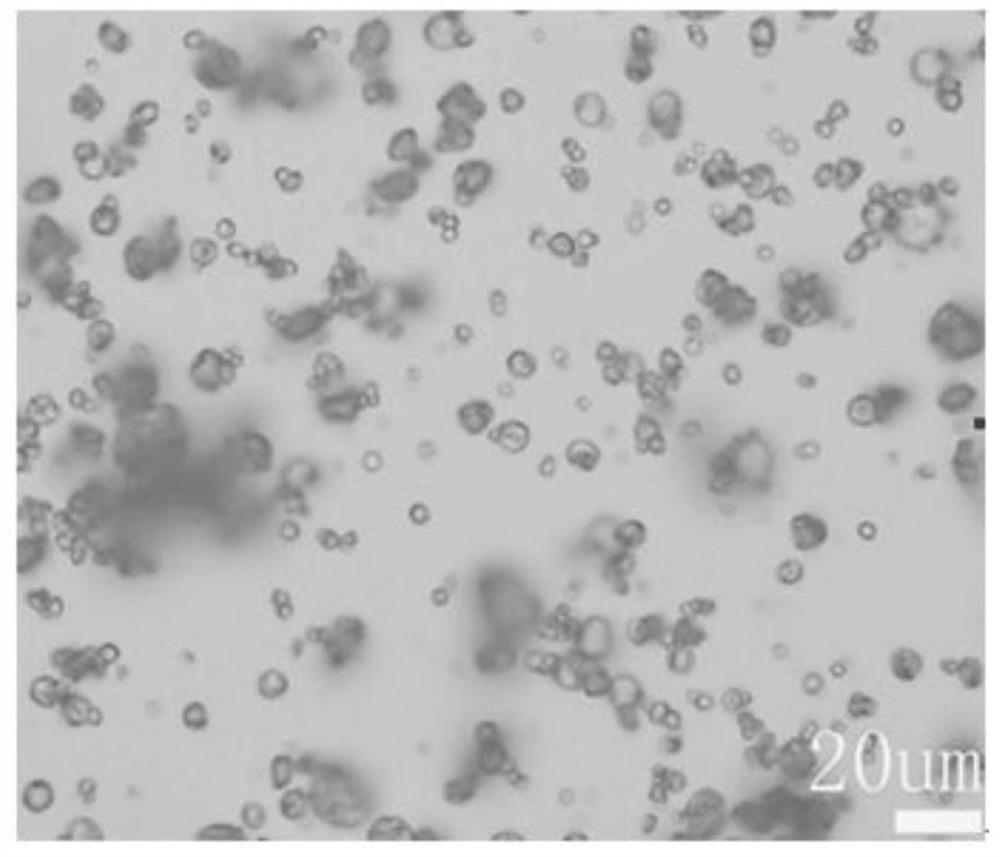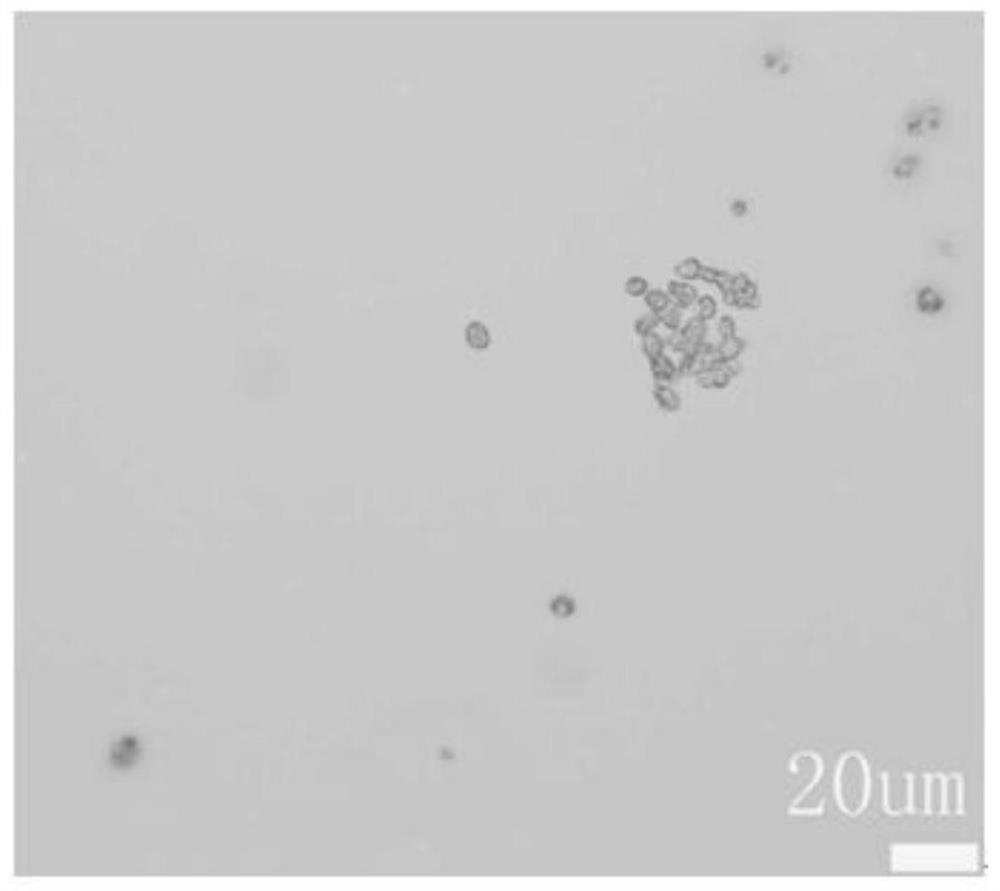A kind of polyethylene glycol/ethyl cellulose phase change microcapsule and preparation method thereof
A technology of ethyl cellulose and phase-change microcapsules, applied in chemical instruments and methods, heat exchange materials, etc., can solve problems such as difficult to degrade, fail to meet the needs of use, environmental pollution, etc., and achieve the effect of easy recycling
- Summary
- Abstract
- Description
- Claims
- Application Information
AI Technical Summary
Problems solved by technology
Method used
Image
Examples
Embodiment 1
[0027] Add ethyl cellulose and polyethylene glycol (molecular weight: 20,000) with a mass ratio (mass ratio of ethyl cellulose and polyethylene glycol, the same below) of 1:3 into dichloromethane, and stir at room temperature After 3h, a transparent and homogeneous solution was obtained. Set the inlet temperature of the spray drying device to 100°C, the compressed air pressure to 0.18MPa, and the air velocity to 40m 3 / h, with the speed of 1.4mL / min, the solution is transported into the spray drying device by the peristaltic pump, and the polyethylene glycol / ethylcellulose phase change microcapsules are obtained by spray drying.
[0028] The optical microscope picture of the prepared polyethylene glycol / ethyl cellulose phase change microcapsules is as follows: figure 1 As shown, in the polyethylene glycol / ethylcellulose phase-change microcapsules, ethylcellulose is on the outside, polyethylene glycol is on the inside, and the particles are spherical and relatively uniform in ...
Embodiment 2
[0030] Ethyl cellulose and polyethylene glycol (molecular weight: 2000) with a mass ratio of 1:4 were added into dichloromethane and stirred at room temperature for 3 h to obtain a transparent and uniform solution. Set the inlet temperature of the spray drying device to 80°C, the compressed air pressure to 0.20MPa, and the air velocity to 25m 3 / h, with the speed of 2.8mL / min, the solution is transported into the spray drying device by the peristaltic pump, and the polyethylene glycol / ethylcellulose phase change microcapsules are obtained by spray drying.
[0031] The optical microscope picture of the prepared polyethylene glycol / ethyl cellulose phase change microcapsules is as follows: figure 2 As shown, in the polyethylene glycol / ethylcellulose phase-change microcapsules, ethylcellulose is on the outside, polyethylene glycol is on the inside, and the particles are spherical and relatively uniform in size, with a particle size ranging from 2 to 6 μm. The heat of phase chang...
Embodiment 3
[0033] Add ethyl cellulose and polyethylene glycol (molecular weight: 800) with a mass ratio of 1:5 into dichloromethane, and stir at room temperature for 3 h to obtain a transparent and uniform solution. Set the inlet temperature of the spray drying device to 60°C, the compressed air pressure to 0.16MPa, and the air velocity to 20m 3 / h, with the speed of 2.8mL / min, the solution is transported into the spray drying device by the peristaltic pump, and the polyethylene glycol / ethylcellulose phase change microcapsules are obtained by spray drying.
[0034] The optical microscope picture of the prepared polyethylene glycol / ethyl cellulose phase change microcapsules is as follows: image 3 As shown, in the polyethylene glycol / ethylcellulose phase-change microcapsules, ethylcellulose is on the outside, polyethylene glycol is on the inside, and the particles are spherical and uniform in size, with a particle diameter of about 4 μm. The heat of phase change of the microcapsules meas...
PUM
| Property | Measurement | Unit |
|---|---|---|
| diameter | aaaaa | aaaaa |
| phase transition enthalpy | aaaaa | aaaaa |
| particle diameter | aaaaa | aaaaa |
Abstract
Description
Claims
Application Information
 Login to View More
Login to View More - R&D
- Intellectual Property
- Life Sciences
- Materials
- Tech Scout
- Unparalleled Data Quality
- Higher Quality Content
- 60% Fewer Hallucinations
Browse by: Latest US Patents, China's latest patents, Technical Efficacy Thesaurus, Application Domain, Technology Topic, Popular Technical Reports.
© 2025 PatSnap. All rights reserved.Legal|Privacy policy|Modern Slavery Act Transparency Statement|Sitemap|About US| Contact US: help@patsnap.com



